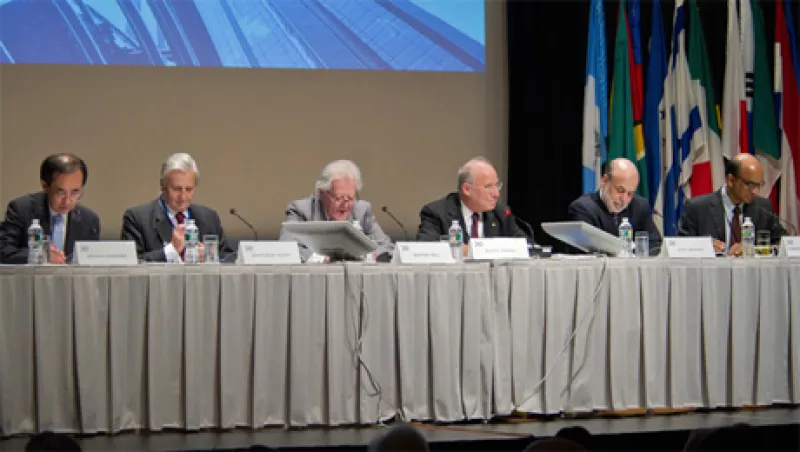My research center at Stanford has for its mission to facilitate understanding of the financing, development and governance of the strategic assets that underpin industrial dynamism and economic growth. We are in Stanford’s engineering school because we like our researchers to have the same constraint: All the financial research we do – all of it – has to be relevant in some way to the engineers walking our hallways (i.e., the people that are building bridges and designing software programs). We have to help them do their jobs. I agreed to run this center because I’m passionate about 'long-term investing', and I believe that finance does not have to be a ‘zero sum game’. In short, I think we can find mechanisms to put long-term capital to work in ways that drive sustainable economic growth for all.
Anyway, no doubt some of you are thinking that my approach to finance is very “Stanford” or “Californian”. (And if you are thinking that... thanks.) But the reality is quite different... this topic is on the agenda all over the world, from the World Economic Forum to the OECD. And, recently, the Group of Thirty – which is, as you probably guessed, a group of thirty finance and economic big-shots – has also taken up the topic as part of its new Working Group on Investment Time Horizons. And, as luck would have it, the G30 just published a new report entitled, “Long-term Finance and Economic Growth”. And the report is... very good. Go away and read it. (Then come back.)
The G30 decided to launch their project on long-term finance after realizing, in the wake of the financial crisis, that finance had consequences for... wait for it... the real economy. Surprised? I didn’t think so. Anyway, whatever the motivation, the Group then set about drafting some guidelines to help channel long-term capital into long-term, productive assets. Here’s a blurb describing their motivation:
“A fundamental part of reigniting growth is ensuring the availability of sufficient resources to meet long-term investment needs. Productive investment provides a strong basis for both economic growth and job creation. Yet, there is mounting evidence that the postcrisis financial system is not well structured to provide the level of long-term financing that is required to support global economic growth... Efficiently and seamlessly matching global savings with long-term investment opportunities is a core function of the financial system—but questions loom about whether the supply of financing will be adequate to meet the world’s needs.”
As you might imagine – especially since you’re reading about all this on AoG – one of the key areas of focus for this group was on the broader community of institutional investors (the “Giants”, if you will). Like me, this group recognized the importance of helping long-term investors actually invest ... you know... for the long term. Here are the G30’s big recommendations:
1) “Use of performance and asset allocation models that rely excessively on performance relative to market benchmarks are inherently procyclical and should be discouraged. Funds should use transparent and appropriate measures of returns that are consistent with long-term investment horizons, building on work already under way or recently completed.”
Amen.
2) “The governing bodies of sovereign wealth funds and public pension schemes should be strengthened and given the necessary independence in decision making. The boards should have the right mix of skills to design, assess, and challenge long-term investment strategies. An up-front longer-term commitment to board membership among incoming board members would also create incentives for longer-term planning and strategy.”
A-Men!
3) “Incentive pay could also be reconfigured to ensure a focus on longer term returns. Portfolio managers’ bonuses (especially those of senior managers) should be conditional on their performance over a longer defined period, and bonuses for senior managers should be conditioned on a period of no less than three years. This should be driven by the goal of making smart medium term asset allocation decisions in the context of a long-term policy portfolio.”
Hallelujah!
Truth be told, there’s nothing in this report that will shock you with its creativity. Rather, the value here is in the benefit of who’s writing it – the G30 is bringing some serious credibility to a set of principles that may have been viewed as “fringe” by some. Not anymore.






